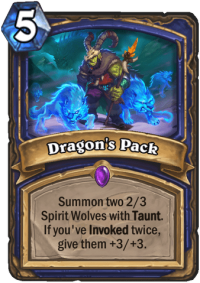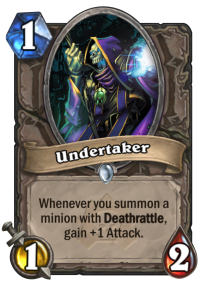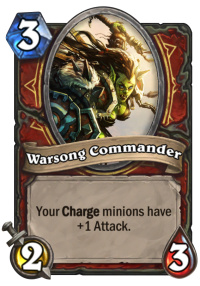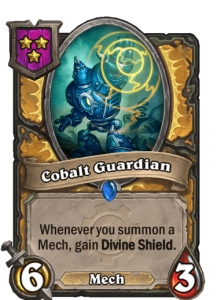
For most Hearthstone gamers, Team 5’s willingness to regularly intervene and tweak the meta is a positive sign. However, even though its goal is to improve the quality of the game, this also brings some disadvantages if it happens too often.
New Year, New Nerf

At the time of writing, nerf 16.0.8 is out. This new update continues to impact Galakrond Shaman – the deck is still back to the top tier in Legend rank despite being nerfed in the previous update. The developers said they felt Galakrond was too strong, and Warlock and Warrior also had to be nerfed a bit. Dragonqueen Alexstrasza can’t play infinitely anymore, and no one can complain about nerfing this card back in Standard. Meanwhile, Necrium Apothecary are also adjusted. This card is considered a temporary response to complaints on Reddit, not because it has ‘problems’ in the meta. Like the previous nerf, each of these changes is understandable, but there’s still the argument that updates are happening too much lately.

Back in the open beta with many major changes taking place to the Classic set. At the time, it was considered a major breakthrough for many people because Team 5 chose to take a more passive approach after the game was released. Not considering the digital factor (digitization – everything changes easily) is considered a poor decision (and is believed to be one of the main reasons why Artifact fell when the original developer refused to nerf). before the number of players dropped without stopping). And yet, Ben Brode and team also hope that the cards from GvG will solve the problem of Undetaker in The Curse of Naxxramas (namely the two useless counter cards: Lil’ Exorcist and Scarlet Purifier). Undertaker formerly +1/+1 for each Deathrattle summoned by you, instead of +1 Attack as it is now. Overall, GvG doesn’t solve anything.
As the years went by, with deck tracking tools and strategy websites sprouting up, the community was able to understand the content in the game faster. As a result, nearly every meta is done by the time a new expansion launch cycle is halfway done. This is one of the major complaints from veteran gamers (along with the lack of long-term goals or alternative game modes). Therefore, the change of approach to the game from Team 5 leadership is considered a good sign. The current implementation also supports the pace of play of mobile users more than in the past years, but this comes at the expense of depth in gameplay. Content like Rise of Mechs and Doom in the Bomb are considered a great solution, creating a new breath for the metagame without having to release a whole new set to rebalance. However, with the game constantly nerfing, even if the solo adventure Galakrond’s Awakening update hasn’t been released yet, you’ll wonder if they’re happening too much.
The disadvantage of constant change

In my opinion, the article prefers stable metas. Most players enjoy the exciting testing phase right after the new expansion comes out. However, that means we are having to use decks that are not yet tactically optimized – because people need time to learn more.
The change in the middle of the expansion phase is a good thing. Often it will create a “before update” and “post-update” mindset in the community (as long as they make a lot of sense in the meta). However, if the developer is constantly nerfing, the time for the meta to stabilize becomes quite short, making it take longer to understand all the cards. When they know their deck will be nerfed in the next few weeks and may become useless, F2P (free-to-play) gamers and budget gamers have a hard time experimenting with new decks. And yet, it also seriously affects some people who like to play optimized, tactical decks. And lastly, if your new set has strong cards that have to be nerfed twice in a row in just one month, that’s either indicative of Blizzard having a very poor product, or a poor development team, right? any?

In fact, the move to change from the developer comes from the community’s ‘overreaction’ to the experience in the current Standard. Galakrond Shaman was almost king of a realm when the new expansion was released, while the team was taking care of Battlegrounds – the game’s new auto chess mode. Blizzard has done its best to make sure the single-player content isn’t boringly repetitive so that everyone can enjoy the game without having to go through the ranks.
Frequent small changes make much more sense in a Battlegrounds environment, and having a large amount of cards and Heroes to change in and out of constantly (plus the ability to easily craft new cards/Heroes) helps crafting This level of play has a great advantage over other “auto” games. However, the Battlegrounds craze will die off as quickly as it started, even faster, as competitors have more convenient ways to increase the appeal of their games.
Of course, tryhard players have always been underrated in the Hearthstone community. Game modes like Arena or Wild were completely ignored, Battlegrounds launched with a buggy scoring system and Blizzard didn’t even intend to reset ranks (like in Standard and Wild) even though player ranks became extremely high. The difference is only for a short time, in addition, there is no tournament mode in the game that makes it extremely difficult to compete between normal players (usually organized in small groups instead of according to the system). . Changing the meta multiple times in an expansion might make the casual player more interested in the game, but on the other hand it leaves tryhard players less motivated to play. As Magic: The Gathering has less and less new players, the solution offered by the publisher is to reduce the complexity and cost of the game, not nerf everything that is too powerful. Hearthstone’s design team has always focused on predefined playstyles instead of standalone strong cards, and making small changes constantly is probably not the best way to solve the current problems of the game. game.
According to Hearthstonetopdecks
Source link: Hearthstone: Pros and cons of nonstop balance updates
– https://emergenceingames.com/
